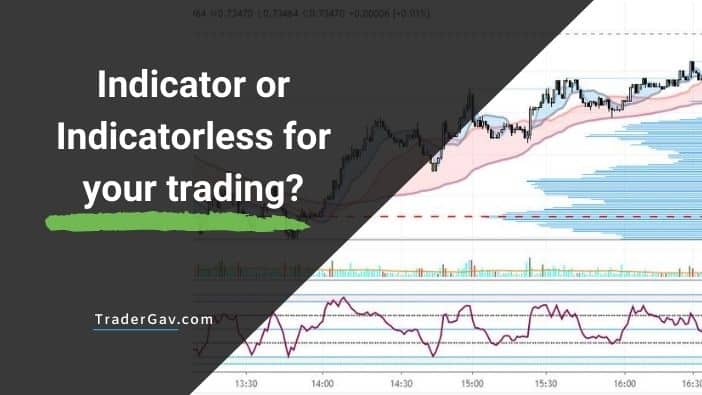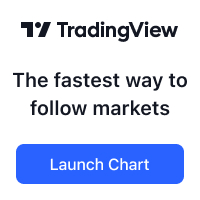I reviewed my trade, and found a mistake that I have made. Basically, I have ignored my own trend evaluation system as I have mentioned in my earlier post “Defining a trend“. So this post just serves as a note to myself. [Read more…] about What had I done wrong
Strategy & tools
Goals for Consistency
Consistency, consistency, this is one of the most important quality I wanna achieve. Here I have a set of goals pertaining to consistency. I got the material from an article sometimes ago. I have no idea who is the author. Anyway, here is the abstract and I have added my own ideas.
I want to consistently…
- Visualize myself in tune with the market
Seeing oneself in tune with the market and apart of the ebb and flow. Great athletes constantly visualize themselves performing at their peak. In trading, which is purely a mental game, is just as incumbent upon us to do this as well and even more often.
- Be as professional as possible.
Trading is not a pastime activity. It has to be treated seriously, and professionally. We have to do the best job, possible leaving no regrets at the end of the day.
- Record my trades for review and analysis
By recording our trades and thoughts, we allow ourselves to internalize the market’s actions even more and objectively analyze our own actions.
- Look to be the agressor and proactive
Looking for setups and taking a dynamic approach to the market is critical in succeeding. Those that can consistently seek out great opportunities and then execute on them are usually rewarded.
- Following my trading plan
Having a plan is important. Being able to execute the plan is the key to success. Stick to it.
- Be patient and hit the same high quality spots
By executing the same game plan, we remove a great deal of the emotional turmoil that trading can bring.
At last, consistency in our approach leads to consistency in our profits!
Failure patterns…of a trader

I was reading some trading articles, at the same time, review my past performance. What I am trying to do is identifying some fatal patterns that caused my losses, the failure patterns of a trader. Why?
I am not referring to chart patterns, but the patterns of traders’ behaviors. When I first started trading, I was told to observe the behavior of winning traders, and learn from them. I can’t agree more with this idea.
That’s why I would encourage new traders to start reading books like Market Wizards: Interviews with Top Traders and The New Market Wizards: Conversations with America’s Top Traders (A Marketplace Book).
It is important that you want to learn what winning traders do. However, I think it is important to observe the behaviors that cause the majority to fail. Here are some patterns that I have observed from myself and some traders that I know. Of course, there are still a lot of them, I am listing 4 failure patterns that I have experienced.
4 Failure Patterns of a trader
Laziness
We like shortcuts. Instead of working on studying the markets, understand the mechanisms of trading, we focus on looking for answers.
We want something that can give us a signal to “buy” a “good stock” and waiting to collect profit as soon as possible. We do not accept the fact that it takes a great deal of effort and time to have a feel of the market we are trading, such as observing the changes of volatility, reversal patterns, to test our strategies, and to prepare our own trading plan, etc. But, “good news” is, most traders will realize this problem when have enough losing trades, and get really beaten by the market. In trading, the lesson is always learned when confidence and money are no longer with us.
Lack of focus
We know and believe there are opportunities to make good money from trading.
We jump from stocks to futures and then options or even spot forex. Wow! Isn’t it cool? And , I guess you know, I have met more failed “multi-markets” players than others. All right, I was one of them (Other than Options, I have traded stocks, futures, warrant, CFD, and spot forex).
I am not saying it is not possible to play different markets or instruments concurrently, but, that’s not for everybody. There is a lot more to learn from one instrument, for example, futures trading.
I see stocks trading and futures trading are like playing tennis and table tennis (Ping-Pong, if you are from Asia). The rules are similar, the ways of playing are also similar, but the strength, the speed, and, the playground are totally different. Don’t expect a table tennis player to do well in tennis without much training.
Even though you have finally chosen futures trading as your play ground, stop jumping around from mini-sized Dow to Soy Bean then E-mini S&P then Euro futures and finally Pork belly.
Yes, I know there are traders trading a basket of futures, but, maybe that’s not for you, yet.
Focus on E-mini S&P, for example. How well is your system/strategy on this market? Is the tic size and volatility too big for you? Think. If not, go lose some money, then you understand what I am trying to say. If I can’t be consistently profitable in one market, do I expect to do well in trading basket futures at the same time?
Overconfident
First of all, I know traders experienced a lack of confidence as well, but I see more traders overestimate themselves.
I had a winning streak of being profitable every trading day for around a month when I started trading futures. Man, I thought I should be included in The New Newmarket wizard! LOL.
I did not know about the trading plan, risk management, etc. I just simply jumped into the market, and get a couple of hundreds home every day. I was just lucky. Until I faced consecutive weeks of drawdown or staying flat, I know, I need to start from scratch work on planning, testing, etc..
Overconfidence will cause lack of confidence once you are beaten.
Taking losses blindly
I am always puzzled when people tell me it is ok to lose money in the market.
Yes, we have the accept the fact that every trader will have losses even drawdown during the life of trading. But do you really learn from your losses? or just simply think that losses are part and parcel of trading?
You dumb. Losses are NOT ok if it is not part of your trading plan. You do not have a plan to execute, then how can a loss become part of your trading?
“I take loss because my setup failed to perform or the chart pattern I was looking failed to continue forming.”
“I take loss because I have receive margin call from my broker or I finally “can not take it” anymore.”
See the difference?
Seriously, losses are definitely NOT ok. Think, why did you lose? Stop telling yourself to accept losses blindly. There must be a reason you give away your money.
The moment I start observing failure patterns of trader, that’s the moment I identify my own problem and try to solve it.
Just another piece of random rant from Gav.
If you are interested in learning more about trading, make sure to check out my Back to Basics of Trading series.
Indicator or Indicatorless-Should you use indicator?

This started from yesterday when I was proudly showing my Adjusted TRIN and Buyer/Seller Index to my fiancee because I thought it was so cool. Well, I guess the colored lines on the chart were meaningless to her. She said:” When you first started dummy trading, you were trying to get rid of these indicators, now why are you messing up the chart again?” ah well…
I am not a big fan of technical indicators. In fact, I can’t even understand and apply Stochastics properly (maybe, I just did not put enough time in this area)
Should You Use Indicator?
I have always heard or read about, “Follow the price action is enough”, or “Indicators are useless” from anonymous traders who sound like a pro (or pretend to be one) blah blah blah.
To a certain extend, I agree with them. You can’t rely on an indicator to make a living in the trading business. But are indicators really useless? I don’t really think so.
Ok, first, I try to understand the construction of a technical indicator, as well as the construction of the understanding of price action in my mind.
Technical indicators are some arrangements of price. The creator reads charts trying to understand the price action and subsequently uses mathematics presentation to analyze the price action and finally plots it on the screen. Here we have our “Superman Index oscillator”. The indicator that was designed according to the creator’s understanding, and belief of the market.
Notice this, before a formula is developed, the creator, in fact, needs to read the price, understand it, blend it with his/her belief of “how does the market work” and subsequently turning it into mathematics. This is the process of development.
How about when we do it without an indicator?
Well, we again, read the price, understanding it, observe the volume, or looking at narrow range, and finally come to the conclusion that “the selling is over, it is time to buy in and the market should continue its uptrend.”
Notice the process.
In fact, the “Superman Index oscillator” was coded and executed in our mind. Instead of presenting it as a mathematical formula, we have done the processing in our mind (ok, our brain), then we say “Oversold, buy signal”.
Comparing these two processes, I really do not find very much difference. (Well, maybe it hurts the ego of a trader to pull in indicator into his chart. It makes him looks like an amateur).
The indicator is either drawn on your chart or in your mind.
I see the important components of an indicator: the belief of the trader and his/her understanding of price action. Each of us has our very own belief of market, such as “I see the market is not random, it is always moving to form a trend, etc”. So does the indicator creator.
To me, in order to use an indicator efficiently, I would prefer to understand the internal (construction) of the indicator. Well, you can read tons of charts, trying to observe some patterns of the indicator in relation to price action, however, when market condition changes, the indicator will fail. And you will never know the reason without knowing how it was created.
The problem of trading with technical indicator is that, trader tends to be lazy or being ignorance to understand the mathematics construction behind the scene.
Instead, he is focusing on looking for “overbought/oversold” lines, crossover points, etc. I don’t think reading some text description of a technical indicator are enough.
Understand the programming and mathematics behind, is the preferred way. Tough job though. If I can’t figure out the intention and the construction of the indicator, why do I want to risk my money trading with the indicator? (ok, some traders prefer backtesting the indicator before applying…)
Having said that, the best technical indicator is always the one that is created by yourself. It is just another way of explaining your understanding of market. You have your belief, understand and plan, you code it , and plot it on the chart. You trade with it, without much emotion hitches, you follow it. You are responsible to its success and failure.
Technical indicators can’t help you to understand price action. Instead, you should first understand price action and use the indicator that represent what you understand. Use it as a tool to reduce guess work.
Should you use indicator? It depends on what do you see in it.
Just another piece of my random rant on this topic.
On the side note, if you are interested in learning more about trading, check out my Back to Basics of Trading series.
Reading: Trading with Candlesticks
As usual, I have done some search work on the net. Here are some nice articles on candlesticks.
- Candlestick Reversal Bottoms as a Trading Tool
- Gaps in Japanese Candlestick charts — Technical Analysis Education
- Trading the Long Red Japanese Candlestick Formation
- Trading the Long Green Japanese Candlestick Formation
- Candlesticks and Resistance
- CBOT – High Probability Trading with Candlesticks
- Trading the Indicators
- Why I Use Japanese Candlesticks: Learn the Basics of Those Funny-Looking Charts
- Combine Candlesticks Analysis with Western Technicals
Books on Candlesticks Trading
Readings: Market Profile
I am always curious about Market Profile. After reading some traders are day trading with Market Profile, I decided to do some kinda research on this tool.
Here are some articles I have found:
- Stock Trading with Market Profile
- Market Profile… NQoos- TradingNaked
- Market Profile Trading Methods NQoos
- Market Profile CBOT – Educational Materials
- Market Profile Trading Techniques- CME presentation
- Traders Laboratory – Market Profile Trading Concepts
- TraderFeed: Using Market Delta in Trading
Books:
Steidlmayer on Markets: Trading with Market Profile, 2nd Edition– Steidlmayer

